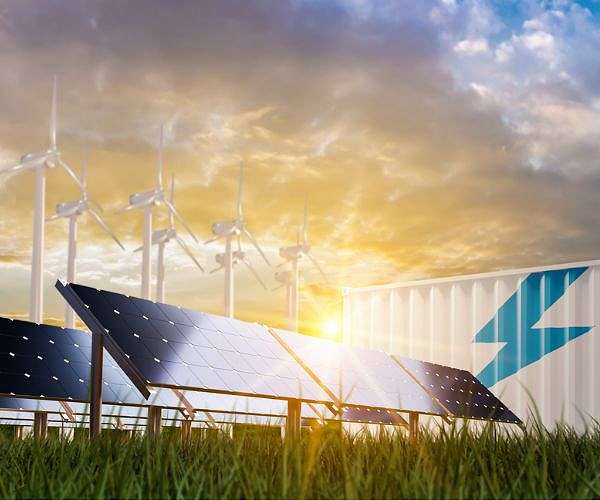Engineers develop additive for affordable storage of renewable energy
To advance the promise of renewable energy sources such as solar and wind power, researchers at the University of Wisconsin-Madison have designed a water-soluble chemical additive to improve bromide-based water flow batteries. This innovation addresses critical energy storage challenges and paves the way for safer and more cost-effective solutions.
“Bromide-based water flow batteries are a promising solution, but there are a lot of messy electrochemical problems with them. That’s why there are no really successful bromide-based products today,” says Patrick Sullivan, a UW-Madison PhD graduate in chemistry. “Yet our one additive can solve so many different problems.”
Sullivan, along with PhD student Gyohun Choi and assistant professor Dawei Feng, developed the additive to improve battery performance and efficiency. The team’s findings were published in ‘Nature’ on October 23, 2024.
Aqueous flow batteries: a safer alternative
Although lithium-ion batteries are widely used for grid energy storage, their limitations include safety risks, such as fires and explosions, and dependence on a vulnerable international supply chain. In contrast, aqueous flow batteries, which use water-based electrolytes, offer scalability, durability and improved safety.
The most established flow batteries rely on expensive and scarce vanadium ions. Bromide, a cheaper and more abundant alternative, has similar theoretical performance potential. However, bromide-based batteries face practical obstacles. Bromide ions often escape through the membrane, reducing efficiency, or precipitate in an oily residue that disrupts functionality. Worse still, the ions can form toxic bromine gas, which poses safety risks.
Solving challenges with molecular engineering
To address these issues, Choi and team developed more than 500 molecular candidates, narrowing them down to 13 engineered “soft-hard zwitterionic trappers.” These multifunctional additives proved to be very effective in solving bromide flow battery problems.
The additive encapsulates bromide ions, preventing them from passing through the membrane, while maintaining their solubility in water. It also stabilizes the ions, avoiding the formation of residue or harmful gases. The results were remarkable. “Our devices with the additive functioned for almost two months without decay, compared to devices without this additive, which typically fail within a day,” Feng explains.
This improvement significantly extends battery operational life, a key factor for renewable energy storage systems designed for long-term use.
Looking ahead
Choi plans to delve deeper into the science behind additives for halide flow batteries, while Sullivan, now CEO of renewable energy startup Flux XII, will work on scaling the additive for industrial applications. Early testing indicates the additive is viable for large-scale production.
The innovation marks an important step towards reliable and affordable energy storage solutions, a crucial part of the future of renewable energy.
Research report:Soft – hard zwitterionic additives for aqueous halide flow batteries


